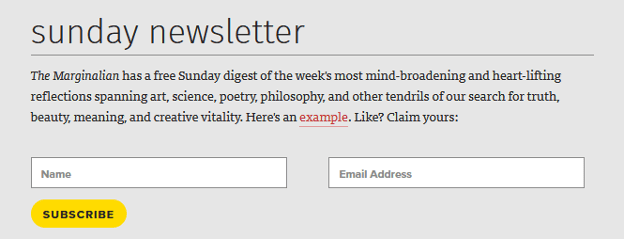Having a website that is well-ranked for strategic keywords can get your business in front of potential customers, and, ideally, leads to increased revenue.
If you want an effective way to improve search engine rankings, it’s sometimes helpful to combine two forms of marketing, such as SEO and email marketing. Even though email doesn’t get crawled or indexed by search engines, it is a crucial piece to drive desired user behavior by encouraging them to share and engage with your site and brand.
Coalition Technologies helps companies worldwide rise to the top of search engines. Often, combining digital marketing strategies helps our clients achieve incredible results. Schedule a free audit of your SEO and email marketing campaigns with our experts today.
In this post, we’ll walk you through the most effective ways to combine emails and SEO to improve search engine rankings.
Table of Contents
- 1 1. Give to Get
- 2 2. Repurpose Content for Emails
- 3 3. Create Can’t-Miss Subject Lines and Titles
- 4 4. Segment Your Emails
- 5 5. Ditch the Generic CTAs
- 6 6. Ask Your Customers for Reviews
- 7 7. Setup an Email Archive on Your Website
- 8 8. Track Your Email and Search Engine Performance
- 9 An Easier Way to Achieve First-Page Rankings
1. Give to Get

Source: Kohl’s
Research shows that, by 2025, there will be 4.6 billion email users worldwide. Before any of these people receive your emails, they need to become subscribers.
How do you get people to hit that “Subscribe” button? By giving things away that people want. With people dealing with already jam-packed inboxes, you need something that stands out to get someone’s email address.
We recommend trying some of the time-tested ways to incentivize opt-ins, including:
- Sending a one-time-use discount or coupon code
- Giving away a free guide on a subject of interest
- Displaying positive reviews from other readers
- Showing previews of upcoming email content
2. Repurpose Content for Emails
Are you having trouble coming up with ideas for emails and content that improves search engine rankings? We’ve all been there. A quick fix for this problem is to repurpose your content.
The main thing to remember when repurposing content for emails is to keep it short. A great email only needs to capture the reader’s attention and get them to take action. You don’t want to copy and paste an entire article into an email. Instead, write a few sentences explaining an article and what a reader learns by checking it out.
These sources are great places to find content to repurpose:
- Blogs
- White papers
- Videos
- Social media posts
- Slideshows
- Press releases
- Podcasts
As your company’s content library fills, you can also send digest-type emails. These emails can feature snippets of your recently published articles or similar content.
3. Create Can’t-Miss Subject Lines and Titles
Did you know 47% of people decide to open an email based on its subject line? Whether writing content for a blog post or email, titles are often the first things readers see. Of course, writing an excellent title is sometimes easier said than done.
Here are several tips we use to create top-notch titles and email subject lines:
- Keep it as short as possible. If you can remove words from a subject line or title, and it still reads well, remove them.
- Use power words like limited, exclusive, or fast in your titles and subject lines.
- Clearly state what readers get from your content.
Well-written email subject lines can massively boost open rates. Great posts or page titles improve search engine rankings by driving more interest in the form of clicks.
4. Segment Your Emails
As you begin an email marketing or SEO campaign, you’ll typically start creating content for smaller audiences. Over time, as you gain more email subscribers, we recommend segmenting them. According to Mailchimp, segmented emails get 54% more clicks than non-segmented ones.
Segmenting means breaking up your subscribers into smaller groups. You can segment your email subscriber lists any way you prefer, including based on peoples’ interests, professions, and behaviors.
For the best results, consider these email segmentation ideas:
- Create emails meant only for new subscribers.
- Split email lists based on B2B and B2C readers.
- Launch a campaign that reaches out only to lost customers.
Segmenting your audiences helps you create more engaging emails because you’re not trying to reach everyone at once. A more engaged audience is also more receptive to your messaging, likely leading to more email clicks and website traffic. Receiving more web traffic also works to improve search engine rankings.
5. Ditch the Generic CTAs

Source: Email Marketing Archive
A CTA (call to action) is typically a few words in length combined with a link. The purpose of a great CTA is to inspire someone to complete an action, such as visiting a website, signing up for an email newsletter, or making an order.
You can place CTAs in everything from blog posts to emails. The best CTAs contain a few words highlighting what’s in it for the reader.
Creating a great CTA means ditching standard phrases like click here, learn more, etc. Let’s say you own or work for an automobile dealership. Instead of those standard CTAs, your business could use ones like:
- Get Your Dream Car Today
- Help Me Find a New Car
- I Need a New Automobile
The best call-to-action statements include the value or benefit of a product or service. Start generating ideas by creating a list of potential email CTAs. You could soon discover a sharp boost in email clickthrough rates and increased search engine rankings.
6. Ask Your Customers for Reviews
Getting reviews is another crucial factor for improving search rankings, especially if you run a local business. Plus, online reviews create trust. Recent research from Inc reported that 84% of people trust online reviews as much as a friend’s recommendation.
If your business isn’t getting enough reviews, a simple email can solve this problem. You might not get a response from every customer. But, with most people living busy lives, many just need a simple reminder to leave a review.
Google and other search engines factor reviews into their search results. Because search engines want to provide the best results for users, they often award higher search engine rankings to companies with lots of positive reviews.
7. Setup an Email Archive on Your Website
Have you ever experienced the phenomenon known as FOMO (Fear of Missing Out)? It’s human nature to fear missing out on a good thing.
But how can people who don’t subscribe to your emails see what they’re missing? Solve this problem by creating an email newsletter archive and posting it to your website. When potential readers see your archive of valuable and helpful content, they’ll likely become new subscribers.
The other benefit of newsletter archives is potentially increased search engine rankings. With Google and other popular search engines valuing original content, repurposing email archives into blog posts can be very beneficial.
You can also take an example from Brain Pickings, one of the most popular email newsletters in the world. Brain Pickings shows what it offers through this description, complete with an example link.

Source: The Marginalian
8. Track Your Email and Search Engine Performance
Almost every email marketing or SEO program or service offers analytics. Keeping an eye on email analytics helps you improve search engine rankings by learning what performs well or needs more work.
As you look over your analytics, keep the following metrics in mind:
- Bounce rate: The number of emails that didn’t reach a subscriber’s inbox.
- Open rate: How many subscribers open your sent emails.
- Clickthrough rate: How many people click on links in your emails.
- Forwarding rate: Who shares your emails with other people.
- Canceled subscriptions: How many people unsubscribed from your emails.
We recommend regularly tracking your email and search engine performance. This data can also show which emails and website content appeal to your target audience.
An Easier Way to Achieve First-Page Rankings
Employing a strategy that utilizes SEO and email marketing is a great way to cover different aspects of your campaign. SEO will be the slower-moving part that is designed for long-term, organic growth while email marketing’s purpose is to drive traffic and user engagement. While these strategies are different in execution, they both serve the same function: getting users to interact with your site.
While email marketing and SEO remain effective marketing methods, these strategies can take a lot of time and effort. Improve search engine rankings with help from the #1-rated SEO company in America. Coalition Technologies deliver 687% more revenue for our valued clients than the average marketing agency.
Contact Coalition Technologies today for help with SEO, email marketing, web design, and other forms of digital marketing from a team of experts.


